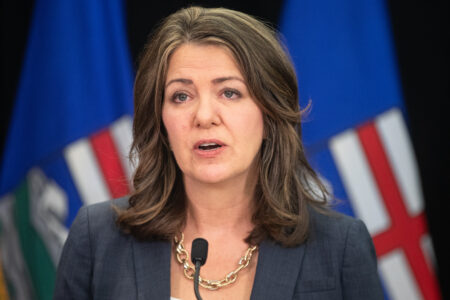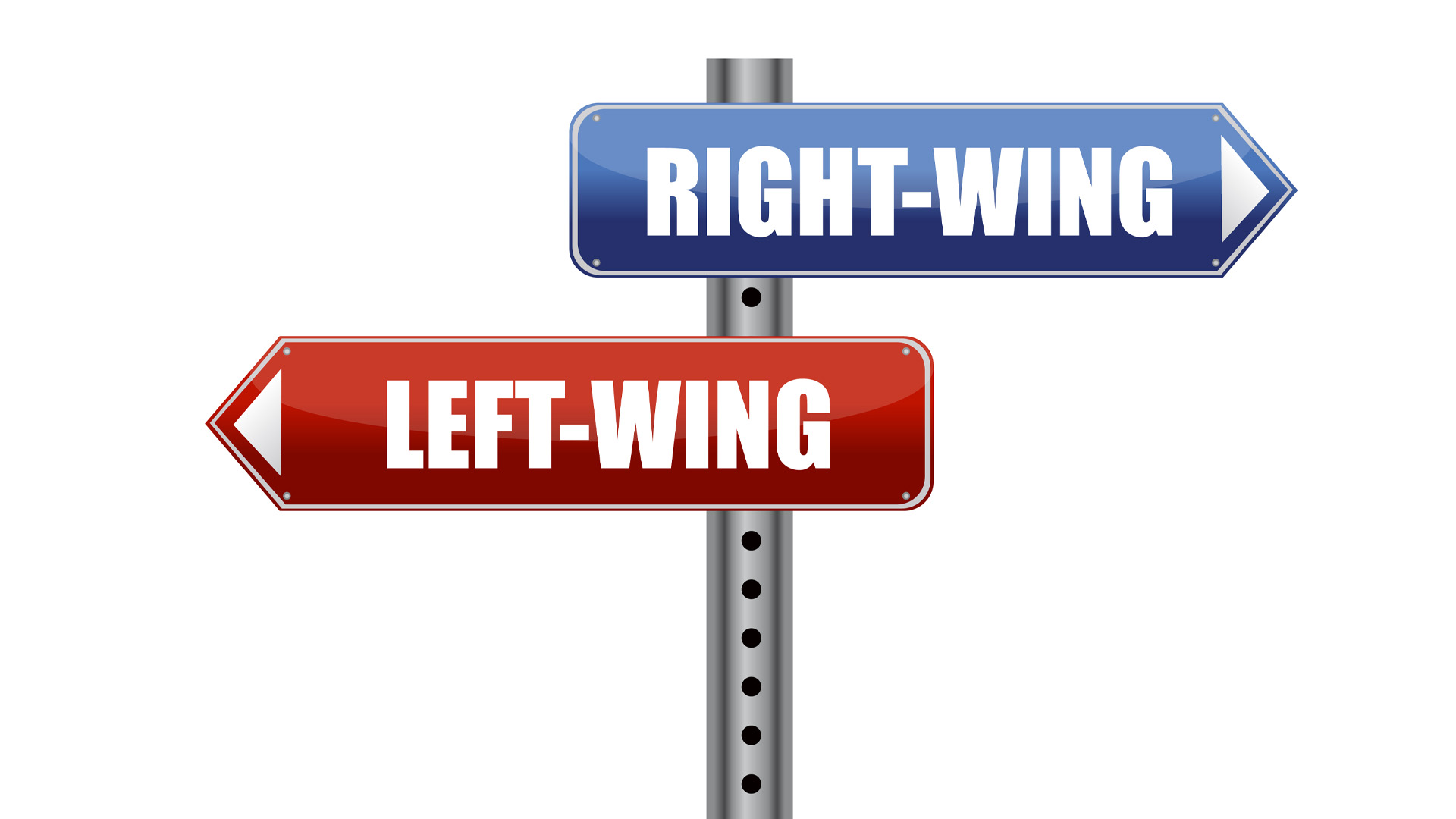
Albertans have a distorted view of their political environment right down to what their “typical” fellow citizen is like.
While the origins and persistence of Alberta’s political culture are interesting, its impact on public policy has attracted less attention, even though it shapes voters and influences the type of government they receive.
Our Common Ground team has surveyed thousands of residents and held focus groups throughout the province over the past four years. The first thing we ask group participants is to “draw me an Albertan.” The results of hundreds of drawings are clear: Albertans are more likely than not to picture a cowboy, a farmer or an oil rig worker.
Nearly a dozen of these focus groups consisted of only women. Another in Lethbridge featured a roomful of recent immigrants from Africa. The result was the same. They choose a white, male, middle-aged, blue-collar worker from a rural area. “Joe” is the most common name they applied to him.
Of the dozens of sessions we’ve led, only two groups settled on a woman as a typical Albertan — but even then she is married to an oil and gas worker such as “Joe.”
As ubiquitous as it is, this image doesn’t match with demographics.
Calgary Stampede season aside, an Albertan is far more likely to bump into a teacher or nurse than a cowboy. Indigenous and racialized communities are growing quickly relative to the white population. More than 80 per cent of Albertans live in urban or suburban areas and the largest proportion of them work in the service industry. Yet the cowboy myth persists.
There are many reasons for this. Frontier masculinity has been baked into Alberta’s political DNA through decades of school curriculum, government branding campaigns and election rhetoric. To some extent, many of the people arriving in Alberta in record numbers are attracted to a narrative based on “freedom” or are at least not repelled by it.
This freedom-based political culture masks moderate and progressive tendencies in the electorate. It makes politicians less likely to choose certain policy options and voters less likely to support politicians who advocate for them. It stifles policy innovation or discussion of progressive solutions to big challenges such as climate change, the drug-poisoning crisis and the decline of public education.
The typical Albertan
We’ve paired our Common Ground focus groups with biannual surveys. Led by my colleague, Feodor Snagovsky, these Viewpoint Alberta polls allow us to assess the gap between who Albertans are as individuals versus how they see themselves as a community.
One set of questions asks people to place themselves and the “average Albertan” – whom we can imagine as “Joe” from the focus groups — on a standard political spectrum on which zero means very left wing and 10 means very right wing.
The results have been consistent since we started asking the question in 2021: Albertans are closer to the centre than they imagine “Joe” to be.
There is room to debate the validity of the left-right spectrum to gauge an ideological position. In this instance, however, respondents are using the same spectrum to compare themselves to the person they perceive to be an “average Albertan.” The fact there is a 12-per-cent gap suggests that Albertans are closer to the political centre than they see their province to be.
Indeed, when asked which terms capture their own political identities, more than half of Albertans tick the “moderate” box (56 per cent). This is higher than both “progressive” (50 per cent) and “conservative” (45 per cent). Participants could select more than one description for themselves.
These disparities also show up in policy issues.
Contrary to the image of their province as a conservative bastion, Albertans are relatively progressive on moving the economy away from oil and gas, maintaining access to safe consumption sites and cutting off public funds to private schools. On all three, support outstripped opposition in a January 2024 Viewpoint Alberta survey.
Yet Albertans fail to see the same level of consensus. Whereas 44 per cent of those surveyed said they either strongly or somewhat supported “transitioning Alberta’s economy away from oil and gas,” when asked to estimate the level of popular support for the transition, the average Albertan pegs it at 28 per cent.
The difference is even larger when it comes to “allowing safe consumption sites to continue operating,” with actual support more than double perceived support. Likewise, while more than half of participants favoured “eliminating provincial funding of private schools,” estimated support was 37 per cent.
We also asked participants if they agreed with proposed changes by the United Conservative Party government that would include schools needing parental approval before allowing students under 16 to change their preferred pronouns.
Some 57 per cent of those surveyed supported mandatory disclosure — up from 13 points from our summer 2023 survey. Yet 69 per cent of the same respondents thought the “typical Albertan” supported the policy.
Albertans appear better at estimating mainstream public opinion on issues core to the UCP government’s agenda. For example, 20 per cent of Albertans supported “further privatizing the health-care system,” just three points lower than the perceived average. Support levels for a provincial police service and pension plan were likewise very low — and Albertans know it.
This presents a large challenge to the government if it wants to advance these plans. It must not only change the minds of voters, but also shift perceptions around the mainstream view.
Political culture and policy stasis
The survey results show the importance of considering actual and perceived levels of public support when considering policy change. As outlined in the Overton window concept, policymakers are less likely to advance a policy initiative when they think it is offside with public opinion or the prevailing norms embedded in the political culture.
Consider the following reported encounter during the COVID-19 pandemic. On Nov. 28, 2020, a social media user recorded the following exchange with Tyler Shandro, who at the time was Alberta’s minister of health. The conversation happened outside a Calgary coffee shop and there were supporting photos attesting to the exchange.
Wearing a mask himself, Shandro was asked why he didn’t support a province-wide mask mandate. His constituent reported that the health minister responded: “What do I say to the guy in Cold Lake?” The constituent added: “Apparently our provincial policy is based on what you tell ‘the guy in Cold Lake.’” The exchange went viral in Alberta, trending for several days.
Shandro would have been aware of the science behind the effectiveness of mask mandates in stopping the spread of COVID-19. He would also have been aware of polls at the time showing Albertans overwhelmingly favoured masking. Yet concern over how an everyman such as “the guy in Cold Lake” would react kept him from advancing the policy.
The health minister’s idea of the typical Albertan was not far off our own research. More than a few of our participants’ drawings featured small-town men from places such as Cold Lake. In this sense, the power of the perceived typical Albertan holds sway beyond the cabinet room.
Albertans who underestimate support for a particular policy issue – such as energy transition, safe drug supply or redirecting funds away from police or private schools – are less likely to speak in favour of their own position for fear of being labeled extreme. In this “spiral of silence,” they may dismiss candidates or parties that advance those policies.
Public opinion and political culture are not synonymous. Unbeknownst to many, popular attitudes may conflict with age-old conceptions of what is acceptable to say, do or think in a particular political community. When they do, it is important to shine light on the discrepancies so that policymakers and the public can properly assess the right course of action.
Methodology
Under principal investigator Dr. Feodor Snagovsky, Viewpoint Alberta conducted an online survey from Jan. 22 to Feb. 25, 2024, among a representative sample of 1,213 Alberta adults through Leger. The figures are weighted by age, gender and region, according to census data. A copy of the questionnaire is found here. When measuring “perceived” public support for various policy initiatives, we took a pair of approaches. For pronoun mandates, the carbon tax, safe consumption sites, and police budgets, we asked respondents: “To what extent do you think the typical Albertan supports or opposes these policies?” We then combined responses of “strongly support” and “somewhat support” to arrive at the “perceived” figure. For pensions, policing, tax collection, oil and gas transition, PST, privatizing health care and private schools, we asked respondents: “What percentage of Albertans do you think at least somewhat supports the following policies?” We then took the average response as the “perceived” figure.









